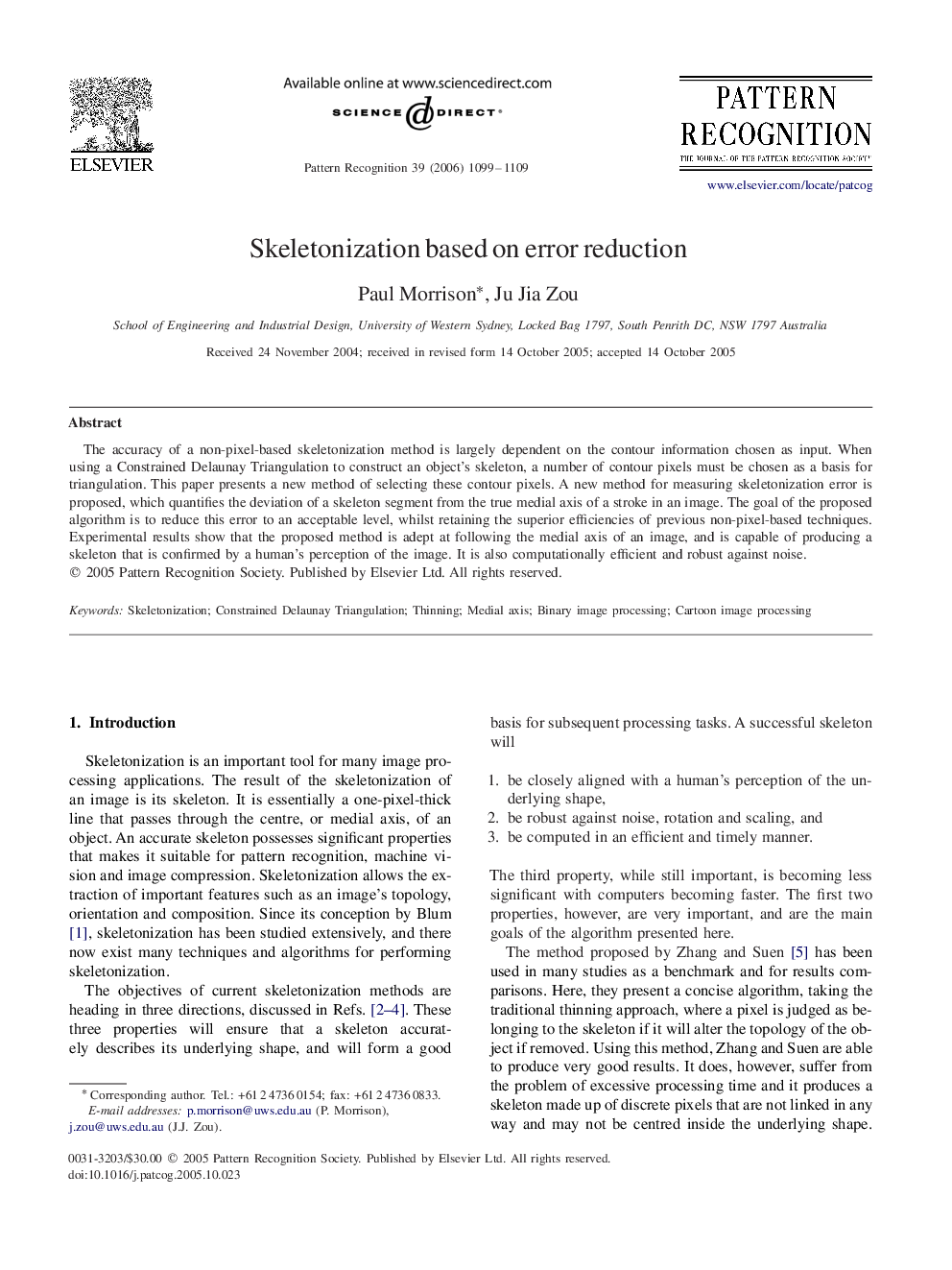| Article ID | Journal | Published Year | Pages | File Type |
|---|---|---|---|---|
| 532001 | Pattern Recognition | 2006 | 11 Pages |
The accuracy of a non-pixel-based skeletonization method is largely dependent on the contour information chosen as input. When using a Constrained Delaunay Triangulation to construct an object's skeleton, a number of contour pixels must be chosen as a basis for triangulation. This paper presents a new method of selecting these contour pixels. A new method for measuring skeletonization error is proposed, which quantifies the deviation of a skeleton segment from the true medial axis of a stroke in an image. The goal of the proposed algorithm is to reduce this error to an acceptable level, whilst retaining the superior efficiencies of previous non-pixel-based techniques. Experimental results show that the proposed method is adept at following the medial axis of an image, and is capable of producing a skeleton that is confirmed by a human's perception of the image. It is also computationally efficient and robust against noise.
